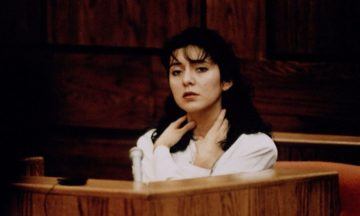Maya Gurantz in the Los Angeles Review of Books:
 Buy me a drink and I’ll break down for you my new obsession: the abuse documentary. It’s a new genre, it’s everywhere on streaming media, and I’ve watched them all.
Buy me a drink and I’ll break down for you my new obsession: the abuse documentary. It’s a new genre, it’s everywhere on streaming media, and I’ve watched them all.
I can describe the precise differences between Part I of Surviving R. Kelly and Part II: The Reckoning; at precisely what point the second half of the series The Keepers loses its initial unrelenting momentum; what makes Lorena, about the Bobbitt case, best of genre; what makes On the Record, about music executive Russell Simmons, peak #MeToo; how Leaving Neverland, the four-hour-long two-parter about Michael Jackson’s pedophilia is critically enhanced by the coda of the Oprah Winfrey-hosted, talk show-format After Neverland; why Seduced, about Keith Raniere and the NXIVM cult, is an abuse doc; why The Vow, about Keith Raniere and the NXIVM cult, isn’t; why the two separate Jeffrey Epstein series (Surviving Jeffrey Epstein and Jeffrey Epstein Filthy Rich) both oddly feel like we’re jumping the shark a bit; and how two Larry Nassar documentaries, At the Heart of Gold and Athlete A, can hit so many identical beats while coming to such entirely different conclusions. You might think I’ve fallen behind this past month, what with the release of the four-part Allen v Farrow and the 8-episode CBC Podcast Evil by Design (about Peter Nygard, the “Canadian Jeffrey Epstein”), but don’t you worry. I’m all caught up.
How did the unraveling of serial sexual abuse become a blockbuster genre? What constitutes its formal newness, on the one hand, and its connection to a rich lineage of American sentimental storytelling about women’s injury on the other?
More here.
